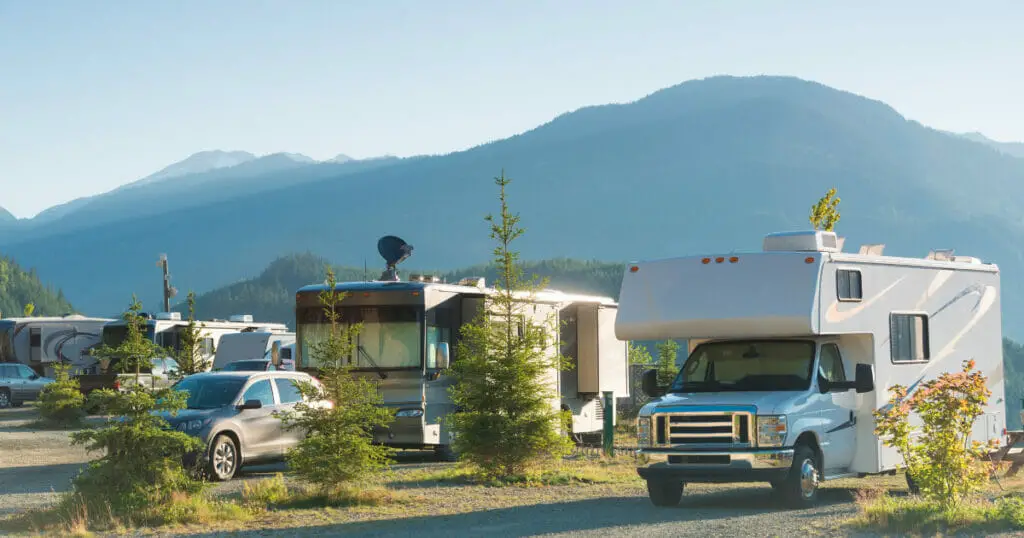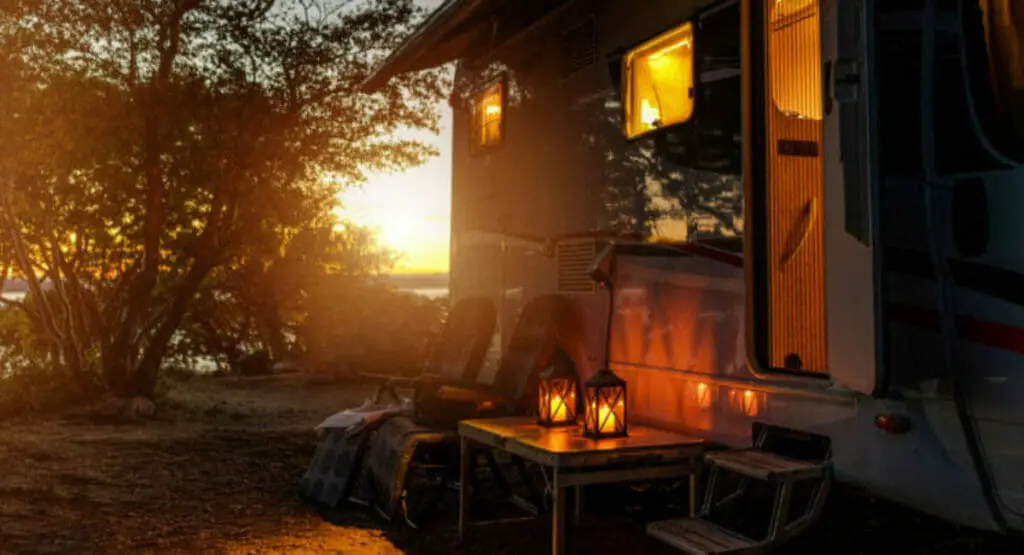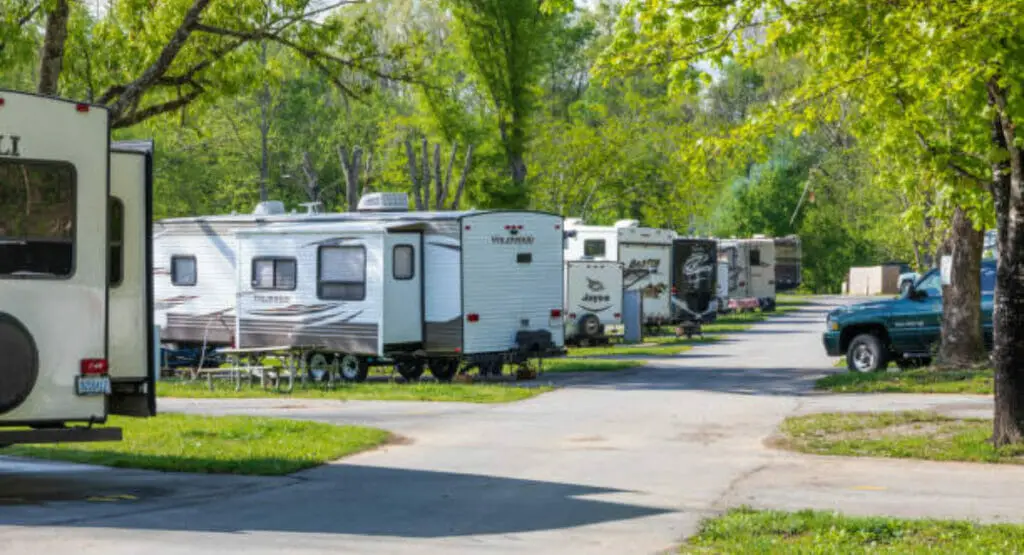Living in an RV is a rising trend among individuals seeking adventure, freedom, and flexibility. It’s a cheap way to travel and discover new locations, but it’s not without its difficulties. Living in an RV can be an exciting and gratifying experience, but it is critical to understand the financial elements before getting started. You can make an informed decision about whether RV living is right for you if you know what to expect in terms of expenditures and hidden expenses. Nevertheless, employing some money-saving methods will assist you in living comfortably within your budget. Thus, whether you’re a full-time RVer or simply thinking about it as a way to travel, this article will give you useful insights and recommendations to help you make the most of your RV lifestyle.
1. RV Living Costs

Before you hit the road, it’s important to understand the types of expenses you’ll encounter as an RV dweller. Here are some of the expenses to consider:
i. RV purchase or rental costs:
The cost of an RV varies depending on its size, age, and condition. Newer variants can cost up to $100,000, while secondhand models can cost between $10,000 and $50,000. Renting an RV is a more cost-effective choice, with rates ranging from $75 to $150 each night.
ii. Insurance:
RV insurance is required to protect your vehicle and personal possessions in the event of an accident or theft. Insurance costs vary according to the type and size of your RV, your driving record, and your location. RV insurance can range from $1,000 to $2,000 per year on average.
iii. Fuel costs:
RVs aren’t recognized for their fuel efficiency, and larger versions can consume a lot of it. Fuel costs vary depending on how frequently you travel and how far you go, but you should anticipate spending $100 to $500 each month on gas.
iv. Maintenance and repairs:
RVs, like any other vehicle, necessitate routine maintenance and repairs. Little repairs, such as changing the oil or replacing a tire, can be as expensive as large repairs, such as mending the engine or replacing the roof. Unexpected repairs can be pricey, so having a rainy day fund is essential.
v. Campsite fees:
Campground fees are one of the most expensive aspects of RV living. Costs will vary depending on location, amenities, and season, but you should expect to pay between $20 and $100 per night. State and national parks are frequently less expensive than private campgrounds.
vi. Utilities:
You’ll have to pay for utilities in your RV just as you would in a standard home. This includes water, power, propane, and, on rare occasions, sewage. Utilities can cost anywhere from $100 to $500 per month, depending on your usage and region.
vii. Food and groceries:
Food and grocery costs will vary depending on your diet and cooking preferences. Cooking your own meals in your RV is normally less expensive, but eating out may rapidly add up. You should anticipate spending between $200 and $500 per month on meals and groceries on average.
viii. Entertainment and activities:
Although RV living offers a variety of options for entertainment and leisure, it can also raise your costs. Budget for recreational activities such as hiking and bicycling, as well as museums and sites. You may anticipate spending on average between $100 and $500 each month on entertainment and activities.
Full-time RV living expenses can range from $1,400 to $3,000 per month on average, depending on your lifestyle and location. But there are ways to cut costs and live on a budget. Here are some pointers:
1. Choose affordable campsites: Research campsites ahead of time and look for ones that offer discounts for longer stays or have lower fees than others in the area.
2. Boondock: Consider boondocking, which is parking your RV on public lands for free or for a low fee. Make sure to research the rules and regulations of the area before doing so.
3. Cook your own meals: Eating out can quickly add up, so try to cook your own meals as much as possible. Stock up on non-perishable items and make use of your RV’s kitchen.
4. Limit your fuel consumption: Drive at a slower speed to improve your fuel efficiency and plan your routes to minimize your distance traveled.
5. DIY maintenance and repairs: Learn how to perform basic maintenance and repairs on your RV to save money on professional services.
2. Hidden Costs of RV Living
There are some hidden costs that you may not consider when first embarking on RV living. Here are a few to keep in mind:
RV storage fees: If you don’t have a place to store your RV when you’re not using it, you may need to pay for storage. Prices will vary depending on the location and type of storage facility.
Towing and roadside assistance: If your RV breaks down on the road, you’ll need to have it towed to a repair shop. Towing fees can be quite expensive, and roadside assistance is also recommended for emergencies.
RV upgrades and modifications: As with any home, you may want to upgrade or modify your RV to make it more comfortable or functional. These upgrades can add up quickly and should be budgeted for accordingly.
Unexpected repairs: Even with proper maintenance, unexpected repairs can still arise. Make sure to have an emergency fund to cover any unexpected expenses.
Health insurance: If you’re not yet eligible for Medicare, you’ll need to purchase health insurance. This can be expensive, so make sure to research your options and budget accordingly.
3. RV Living vs. Traditional Housing
RV living and traditional housing both have their advantages and disadvantages. When it comes to cost, here is a comparison of the two:
1. RV living: Lower housing costs, but higher travel and maintenance costs.
2. Traditional housing: Higher housing costs, but lower travel and maintenance costs.
While deciding between RV living and traditional housing, consider things like your preferred lifestyle, location, and budget. For others, the independence and flexibility of RV life may be worth the greater travel and maintenance costs, while traditional housing’s stability and cheaper prices may be more enticing. Finally, your choice will be determined by your particular tastes and financial condition.
4. Cost of Living in an RV Park
Living in an RV park can be a convenient option for those who want to travel or have a more mobile lifestyle. However, the cost of living in an RV park can vary widely depending on a number of factors. Here are some things to consider:
i. Amenities:
RV parks with more amenities such as pools, hot tubs, Wi-Fi, and laundry facilities will generally have higher fees. Some RV parks may even offer cable TV or on-site restaurants, which can add to the cost.
ii. Location:
RV parks in popular tourist destinations or in areas with high demand will have higher fees. For example, an RV park near a beach or national park may have higher fees than one in a less popular location.
iii. Season:
The time of year can also impact the cost of staying in an RV park. Peak travel seasons may have higher fees, while off-season rates may be lower.
iv. Discounts:
Look for discounts such as weekly or monthly rates or discounts for seniors, military personnel, or AAA members. Some RV parks may also offer discounts for longer stays or for booking in advance.
By considering these factors, you can get a better idea of the cost of living in an RV park and make a more informed decision about where to stay.
5. RV Living Tips
Here are some additional tips to make your RV living experience more comfortable and affordable:
1. Invest in space-saving solutions: Make use of vertical storage solutions and collapsible furniture to maximize your living space.
2. Use a composting toilet: A composting toilet can save water and money in the long run.
3. Install solar panels: Solar panels can help you save money on electricity costs.
4. Purchase a National Parks Pass: If you plan on visiting national parks frequently, purchasing an annual pass can save you money on entrance fees.
*money-saving tips
Living in an RV can be a fun and affordable way to travel and explore new places. By understanding the costs involved and implementing some money-saving tips, you can make RV living work for you.
1. Invest in a good quality water filtration system: This will save you money on buying bottled water and help you avoid potential health risks from contaminated water sources.
2. Consider downsizing your belongings: The less you have to store and move, the easier it will be to travel and live in your RV.
3. Join a RV club: RV clubs often offer discounts on campsites, as well as a sense of community and resources for RV enthusiasts.
4. Stay connected with family and friends: Living in an RV can be isolating at times, so make sure to stay connected with loved ones through video calls, social media, or even planning visits with them on your travels.
5. Remember to enjoy the journey: RV living is all about experiencing new places and adventures. Take the time to enjoy the scenery, try new things, and make lasting memories.



